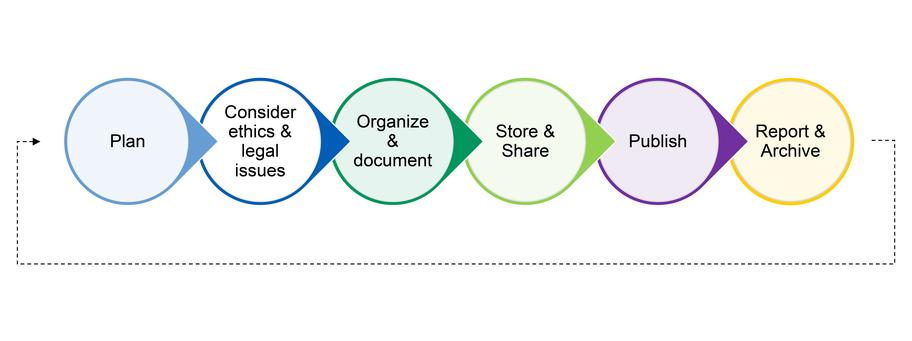Whenever you work with the research data or you start a new research project, the following aspects should be considered:
1. Writing a data management plan
Planning is the key to for successful data management. Do not make things up on the fly but study the data storing, documentation and publishing of guidelines of Aalto in advance and write a data management plan when starting a new research project. Research funders also require data management plans from the funded projects.
2. Ethical and legal considerations
Ethicality of research is key to its trustworthiness. Make sure to familiarize yourself with the Finnish guidelines for Responsible Conduct of Research. Aalto has a network of Research Integrity Advisors and Research Ethics Review Committee who help with ethical questions. The European General Data Protection Regulation (GDPR) is one of the key legal frameworks affecting research. If you work with human subjects, make sure to study Aalto’s guidelines on how to handle personal data in research.
3. Storage and sharing of the research data with collaborators
One always has to estimate the size of the data collected or produced during the project and think where the data will be stored. It is also important to think about possible security level to access your data and regular backups. More information can be found in Storage services for research data section. Noteworthy, personal, sensitive and confidential data require a more careful approach when one chooses the platform for their storage and sharing. More information can be found in handling of personal data page.
4. Organization and documentation of the research data
Even such an obvious question as organization and documentation of the research data requires careful planning with the key question: Will I be able to find and understand my data in the future? Some hints and good practices are described in Data documentation, organization, and metadata section. Data organization and documentation are important tasks of data curation. FAIR principles give guidance for that. For example, proper versioning keeps track of changes and updates to data.
5. Publishing of the research data
Providing access to the research data becomes a general practice to validate scientific results and make the science fully transparent. Furthermore, requirements of funding agencies on open data are gradually arising. Therefore, it is important to plan publishing of the research data on the platforms, which are called repositories. More information is given in Publishing and reusing open data section. Data publishing is an important step towards future reuse of your research data. In all publications, both research articles and datasets, be sure to credit everyone involved in the collection and analysis of the data. For further information see guidance on data authorship and writing a data acknowledgement statement.
6. Preservation of the research data
One has to consider what will happen with the data when the project is ended. Availability of the research data after the research project can be important not only right after the project, but also in 5-10 years, possibly longer. Thus, it is important to preserve the research data and ensure the access to it. More information can be found in Storage services for research data section. Another way of preserving the data could be uploading it to repository. Check Publishing and reusing open data section for more details.


